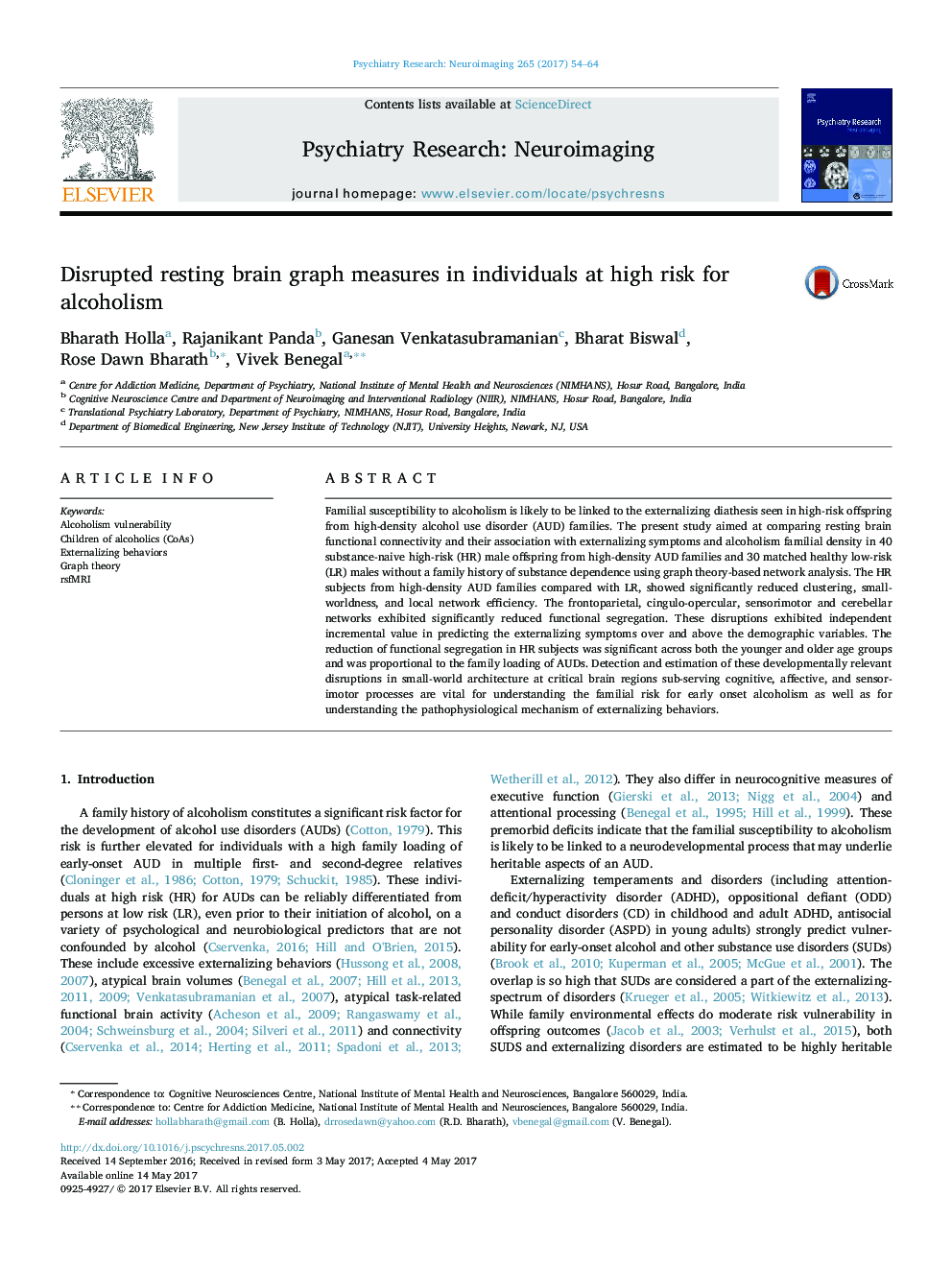| Article ID | Journal | Published Year | Pages | File Type |
|---|---|---|---|---|
| 4933899 | Psychiatry Research: Neuroimaging | 2017 | 11 Pages |
â¢Resting brain graphs of alcohol-naïve children from high-density AUD and control families were compared.â¢Disrupted graph measures were found at both the global and nodal levels.â¢The network disruptions incrementally predicted greater externalizing symptoms.â¢The network disruptions were also proportional to the alcoholism familial density.â¢The disruptions predate substance use and represent premorbid familial vulnerability for alcoholism.
Familial susceptibility to alcoholism is likely to be linked to the externalizing diathesis seen in high-risk offspring from high-density alcohol use disorder (AUD) families. The present study aimed at comparing resting brain functional connectivity and their association with externalizing symptoms and alcoholism familial density in 40 substance-naive high-risk (HR) male offspring from high-density AUD families and 30 matched healthy low-risk (LR) males without a family history of substance dependence using graph theory-based network analysis. The HR subjects from high-density AUD families compared with LR, showed significantly reduced clustering, small-worldness, and local network efficiency. The frontoparietal, cingulo-opercular, sensorimotor and cerebellar networks exhibited significantly reduced functional segregation. These disruptions exhibited independent incremental value in predicting the externalizing symptoms over and above the demographic variables. The reduction of functional segregation in HR subjects was significant across both the younger and older age groups and was proportional to the family loading of AUDs. Detection and estimation of these developmentally relevant disruptions in small-world architecture at critical brain regions sub-serving cognitive, affective, and sensorimotor processes are vital for understanding the familial risk for early onset alcoholism as well as for understanding the pathophysiological mechanism of externalizing behaviors.
